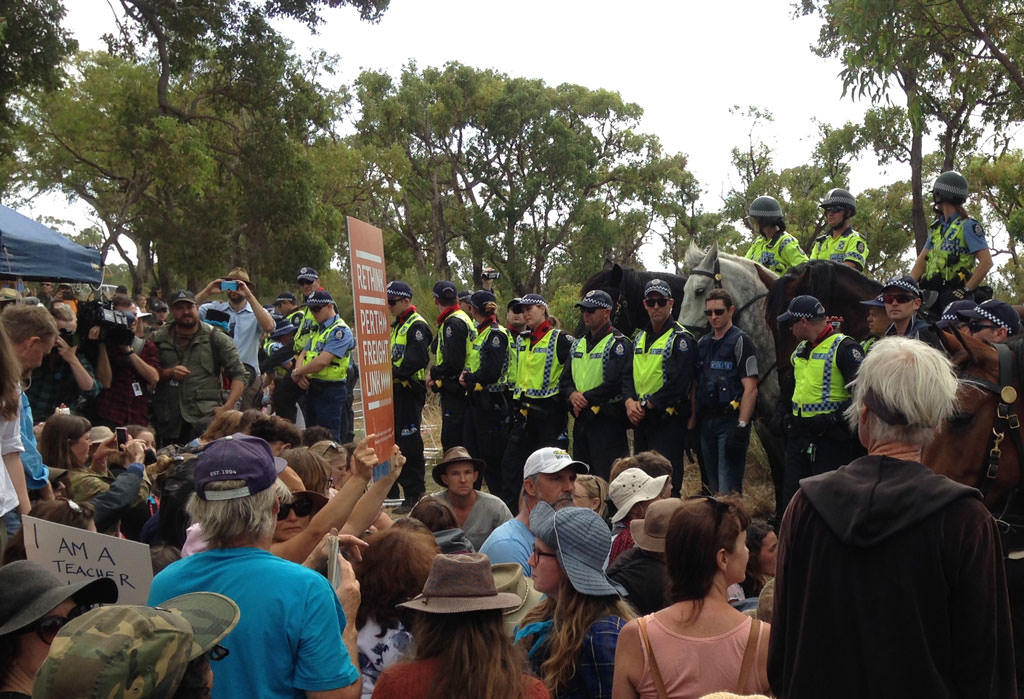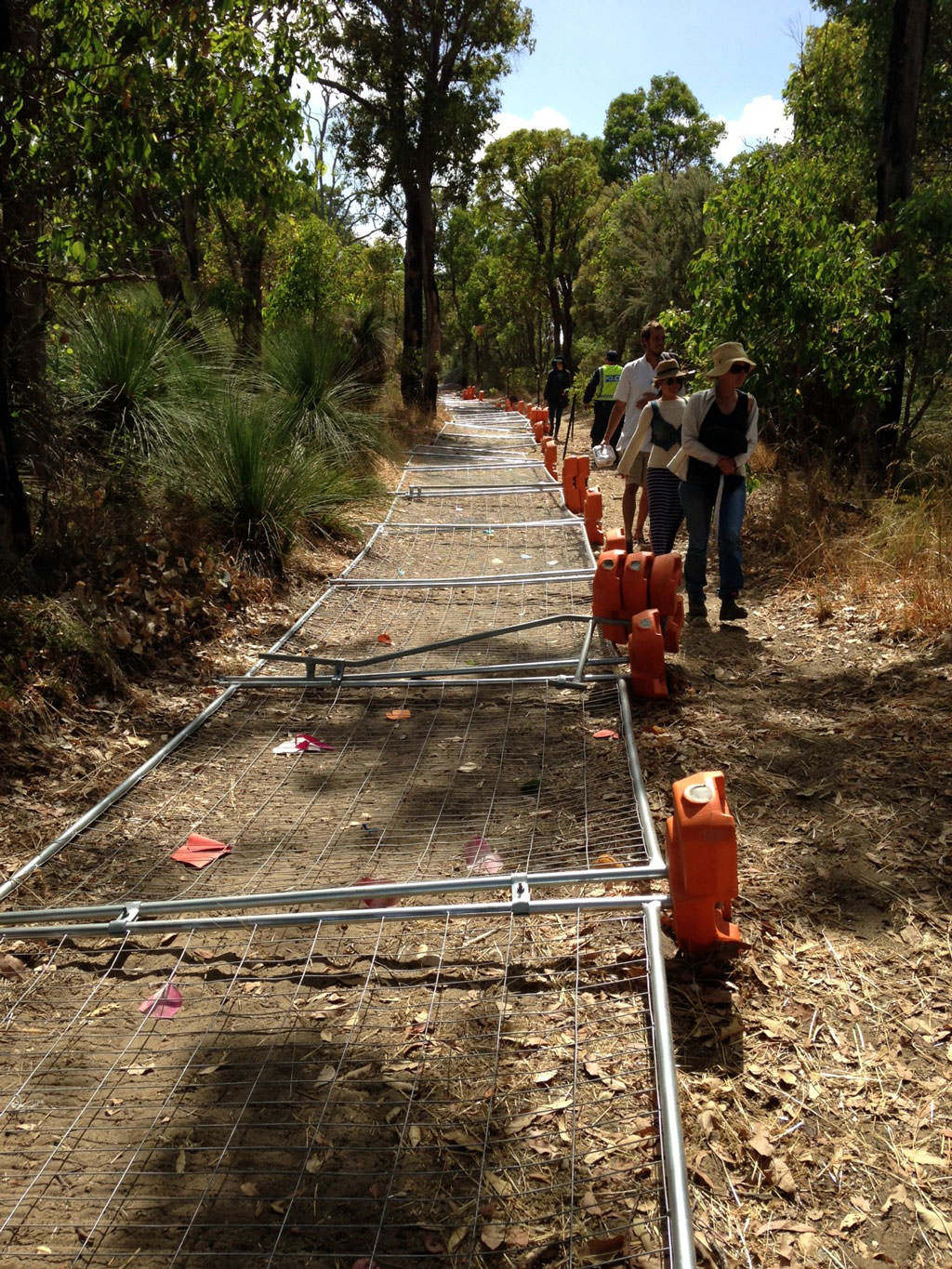Hearts on the Wire
How can paper hearts save wetlands?
The fences went up even before the court challenge failed. Police stood guard, relaxed but close, as workers laid panels of wire mesh into orange plastic bases. This land in southern Perth was reserved for an extension of the Roe Highway; a long dormant plan which in 2014 had become part of Tony Abbott’s Perth Freight Link to Fremantle. The fence was the first step in making the plan a reality and the bushland into a death row; now only those involved in the execution would have access to the condemned.
The fence was despised, but artist Susie Waller dreamed up a project that re-figured it as a canvas on which people could express their frustration, love and hopes for a commutation of the sentence, or at least a stay of execution. Inspired by the Noongar story of the rainbow serpent or Wagyl that created the nearby Beeliar wetlands – through which the highway would also pass – Waller provided colourful cardboard hearts for people to write on and tie to the fence. I wrote my own message on a yellow heart and tearfully fastened it among others declaring love for the wetlands, desire to protect the endangered Carnaby’s cockatoo, or simply No Roe 8.

Photo: Andrea Gaynor
This wasn’t my local patch, but it had all the tough and intriguing old beauty of Swan coastal plain woodland. My second childhood home had been built on similar bush and I had played in remnants on the block next door until they, too, were flattened for a three bedroom, two bathroom home with a built-in garage.
The day bulldozing began in earnest, I took my two children to the Coolbellup bushland. As the dusty violence of bush annihilation took place inside the fence, we walked through the then unfenced section to the west. We saw a tawny frogmouth in a small tree, still as a broken bough. A path led us under the reaching banksia and tall marri, between the grasstrees like frozen fireworks – so remarkable yet familiar – and the ‘dinosaur plant’ macrozamias. We lingered awhile then returned to the fence, where we met a man with a camera. He had come – as he had been coming for years – to record the frogmouth family that had lived and bred in the same tree for generations.

Photo: Andrea Gaynor
Three weeks and three days later, after a Christmas reprieve, more than a thousand people gathered at dawn in a desperate bid to save the remaining bush. We pushed down the fence – hearts heavy on the sand – and occupied the site, surrounding the machinery until driven back by mounted police, or arrested. That afternoon, the tawny frogmouths’ tree was literally bulldozed out from under them, the startled birds flying off giddily in the sharp sunlight. Five days later, the fledgling was photographed lifeless at the base of a tree. He, along with the many bandicoots found dead of shock, exposure and car impact, became potent symbols of a community’s outrage.
This was a small-scale re-enactment of a scene played out countless times on a massive scale: for the ever-expanding suburbs of Perth, for farms, for forestry. But the old, tired cry – the bushland must go! – is becoming less convincing as we awake to the reality of our shared vulnerability. The changing climate of the south-west of Australia is putting pressure on the bushland, perhaps outstripping its capacity to adapt, just as human demands – on people and nature alike – are intensifying.
Our hearts have been torn from the fence by the wind and broken by the devastation we have witnessed. And we, too, are changing hearts, and minds.
Postscript: After the election saw the demise of Roe 8, in an ironic reversal of the protest scenes volunteers re-erected the fences to protect the cleared land, allowing it to regenerate while restoration plans were made.
Susie Waller talks about the ‘Putting our hearts on the line’ project.
Andrea Gaynor is Associate Professor of History at the University of Western Australia.

